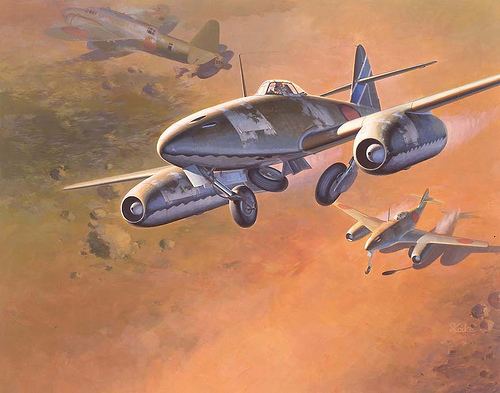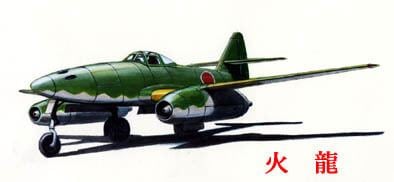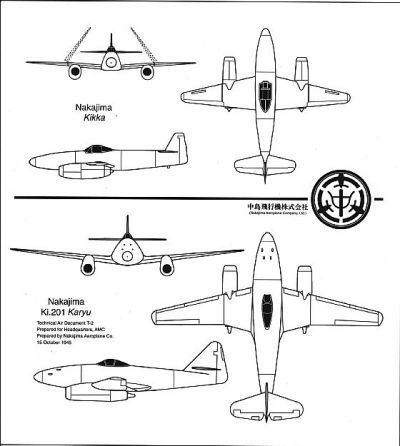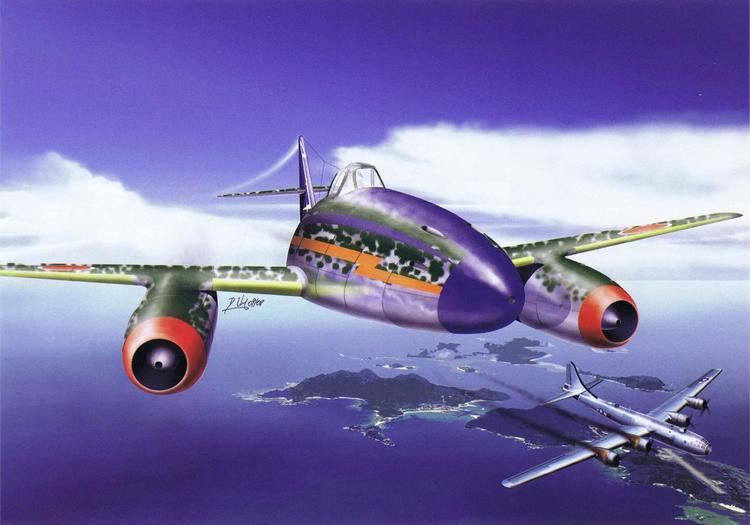Top speed 852 km/h Wingspan 14 m Weight 4,500 kg | Range 978 km Length 12 m Engine type Turbojet | |
 | ||
The Nakajima Ki-201 Karyu/Karyū 中島 キ-201 火龍 ("Fire Dragon") was a Japanese jet fighter project designed during the final stages of World War II but which was never completed.
Contents

Nakajima ki 201
Development

The Karyu began as an in-house project by Nakajima in early 1945 to apply what was being learned about jet aircraft from the Nakajima Kikka attack aircraft to a fighter design. The Kikka had been inspired by the successful German Messerschmitt Me 262, but the similarities to that aircraft were limited to general configuration. On the other hand, the design team led by Iwao Shibuya based the Karyu far more closely on the German aircraft, which had already proven itself quite formidable.

Nakajima attempted to interest the Imperial Japanese Army Air Force in the aircraft, and seems to have succeeded at least far enough to have had an official designation ("Ki-201") applied to it, but at that point, the Army had already decided to pursue derivatives of the liquid-fueled rocket powered Mitsubishi J8M, designated Mitsubishi Ki-200 and Mitsubishi Ki-202, as their way of fending off the B-29 Superfortress raids. It seems that the Navy was also approached, but displayed no interest whatsoever.

Undaunted, Nakajima continued development, anticipating test flights by December 1945. Most sources agree that work on the prototype had not yet begun by the time of the Japanese surrender.
Variants

Proposed versions for Japanese Army development of the Nakajima Ki-201 Karyu were an interceptor - equivalent to the Me 262A-1a - and a fighter-bomber - equivalent to the Me 262A-2a. The powerplant would have been the 8.9 kN (2,001 lb) Ishikawajima Ne-130 turbojet or the 8.7 kN (1,951 lbf) Ne-230 turbojet.
Specifications (planned specification)

Data from Japanese Aircraft of the Pacific War; Famous Aircraft of the World, first series, no.76: Japanese Army Experimental Fighters (1)
General characteristics
Performance
Armament
